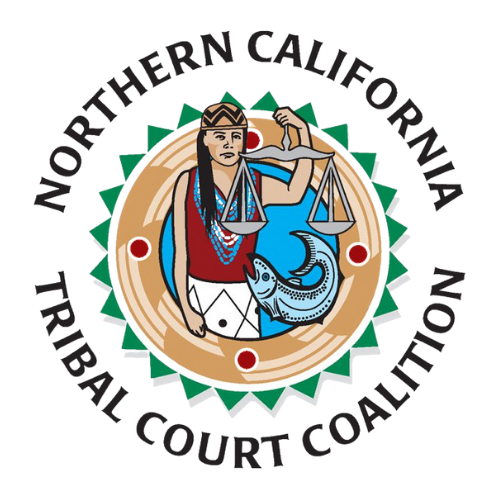Restraining Orders in Tribal and State jurisdictions
A victim of violence may apply for a restraining order from the court having jurisdiction over the place where the violence occurred or where the perpetrator of the violence lives. If the perpetrator of the violence lives on Tribal lands, the victim of the violence may apply for a restraining order from the Tribal court (if available) or the State court for the county where the violence occurred. Not all Tribes have their own Tribal court or law enforcement agency. If that is the case, the victim of violence may apply for a restraining order in the State court serving their County. Once a restraining order is obtained in either jurisdiction, the victim may choose to register the restraining order with the other jurisdiction, particularly if the victim works or visits the jurisdiction often.
In the past, registration of a restraining order in the other jurisdiction was required to obtain enforcement within that jurisdiction. Today, federal and state laws no longer require registration; however, law enforcement agencies may require that the restraining order is in one of several law enforcement databases, such as California Restraining and Protection Orders System (CARPOS) or the California Law Enforcement Telecommunication System (CLETS).
How does a Victim obtain a Tribal restraining order?
When violence occurs on Tribal lands in California, the victim(s) of the violence may obtain a restraining order from the Tribal court or they may go to a State court for that county. Among Tribal courts that issue their own restraining orders are the Hoopa Valley Tribal court, Karuk Tribal court, Tolowa Dee-ni’ Nation Court, Trinidad Rancheria Tribal court and Yurok Tribal court issue their own protection orders. Visit the Tribal court or its website to obtain forms and directions on how to apply for a Tribal court protection order.
Under PL 280, both the Tribal court and the State court may exercise jurisdiction over the matter. If a Tribe does not have a court or does not issue protective orders, the victim(s) should go to a State court. To determine from which court to request a restraining order, consider the safety of the victim, location of the perpetrator of violence, and proximity to the law enforcement agency that will enforce the restraining order. See the Resources section to determine the courts that may serve your area.
Pursuant to the federal Violence Against Women Act (VAWA) and California law, a Tribal court protection order must be given full faith and credit (See 18 U.S.C. § 2265; and California’s Uniform Interstate Enforcement of Domestic Violence Protection Orders Act, Fam. Code, §§ 6400–6409)).
Under these laws, a protective order issued by a Tribal or sister-State court is entitled to full faith and credit and enforcement and does not need to be registered in California. However, many law enforcement agencies and officers will not enforce a protection order unless it is viewed in the California Restraining and Protection Orders System (CARPOS) through the California Law Enforcement Telecommunication System (CLETS). Contact the local law enforcement agency to determine their local practice for enforcing Tribal court protection orders.
Some Tribal courts that issue Tribal court Protective Orders: Hoopa Valley Tribe, Karuk Tribe, Tolowa Dee-ni’ Nation, Trinidad Rancheria and Yurok Tribe.
What happens after the Tribal Judge issues the restraining order?
1. Within 1-24 hours of issuance of a Tribal Protection Order (TPO), the Court Clerk enters the order into the DOJ Tribal Access Program (TAP) kiosk. The system downloads the TPO into the federal National Crime Information Center (NCIC) database and returns a NCIC entry number.
2. The clerk adds the NCIC entry number and date under the clerk’s seal at the end of the TPO.
3. Local law enforcement have access to TAP and NCIC and CLETS (California Law Enforcement Telecommunications System) in their car terminals, and check all. If they are not in their cars, dispatch (911) or calling officer has access.
4. If the victim(s) has a copy of the restraining order in hand, law enforcement must enforce. The petitioner must have proof of service showing that the restraining order was served on the perpetrator of the violence. If there is no proof of service, the petitioner will not get an order after hearing and the TRO (temporary restraining order) will disappear unless renewed by the court.
For Victims: Enforcing your Tribal restraining order
When you obtain the restraining order, make several copies. Keep a copy of the restraining order with you at all times and in locations where you spend significant time such as at home and at work. Give a copy to anyone else listed in the restraining order. Make sure your Tribal and local police departments get a copy of your restraining order. Although, you are not required to register a Tribal court issued protection order with the State court or law enforcement, it is a good practice to make sure that the law enforcement agency is aware of the protection order. Give copies of the restraining order to friends, neighbors or family members that are willing to help you. If the abuser violates the terms of the restraining order, call the police. Document any actions or statements made by the perpetrator of the violence. Keep copies of any threats, messages, or emails. Have a plan to stay safe in case the police cannot arrive immediately.
Obtaining a restraining order can be confusing or a slow process. If you are in danger, focus on staying safe. Always check for restraining order application forms online at your Tribal court website, on the NCTCC website, or on the Judicial Council of California (http://www.courts.ca.gov). Check with your local county court for their required forms. Work with a domestic violence advocate to obtain all the necessary information to complete and submit the forms to the court(s) having jurisdiction.
Resources
Learn more at www.courts.ca.gov/documents/tribal_bulletin-court-protection-orders.pdf
